Wood burners

What is a wood burner?
Wood burners are appliances such as wood burning stoves, fireplaces, and firepits that are used to burn wood in our homes or gardens, usually for heating or cooking.
Lighting fires in our homes is one of the largest source of small particle air pollution in the UK. Wood burners have become increasingly popular in recent years, as a way of creating a cosy atmosphere as well as perceptions that they are greener or cheaper sources of heat.
Burning wood creates pollution inside and outside the home, which is dangerous for our health and the environment. Many people are unaware of the negative impacts of wood burning, even when using the most “eco-friendly” stoves or “ready to burn” wood. Evidence shows that it tends to be the wealthiest who use wood burners in cities – yet everyone, including the most vulnerable, experiences the consequences in neighbouring homes and communities.
Wood burning is one type of domestic burning. Other ways of burning solid fuels at home include wood-based and coal-based briquettes, smokeless fuels, manufactured solid fuels and coal. These can be burnt in open fireplaces, closed stoves, boilers, or in outdoor chimeneas, firepits, barbecues, pizza ovens, bonfires, and incinerators. All these forms of burning produce toxic pollution which is harmful for people's health and for the environment.
Facts about wood burning
Lighting fires in our homes is the largest source of small particle air pollution in the UK.
Even homes with "eco" wood burners are three times more polluted than those without.
Wood burners and open fires produce more harmful PM2.5 than road transport in the UK.
The more PM2.5 pollution you are exposed to, the more likely you are to die from heart or lung disease.

How does wood burning harm our health?
When wood is burned, it creates smoke that releases harmful particle pollution – a mix of tiny solid and liquid particles known as particulate matter – into the air we breathe. Particulate matter is dangerous because its small particle size means it can get into our lungs and even pass into our bloodstream – PM10 is less than 10 micrometres in size (the width of a human red blood cell) and PM2.5 is less than 2.5 micrometres in size.
As one of the smallest air pollution particles, when PM2.5 is inhaled it can inflame the lining of our lungs and enter our bloodstream ending up in the heart and brain, linked to lung disease, heart disease, dementia and strokes.
Any level of exposure to particulate matter is bad for everyone’s health. Certain groups of people – such as children, older people and people with health conditions – are even more vulnerable to its negative health effects.

What are the environmental impacts of wood burning?
Wood burning releases particle pollution into our homes, gardens, and neighbourhoods, which has a negative impact on our local environment and the health of the people who live there.
Most people who use wood burners in their home live in towns or cities. As a result, these areas can have very poor air quality.
As well as releasing particulate matter, burning wood also produces carbon dioxide (CO2), a greenhouse gas that contributes to climate change. Despite the misconception that burning wood is better for the environment or “greener”, it actually releases more carbon dioxide than oil or gas for the same amount of heat or energy. Cutting down trees also destroys forests, damages ecosystems and leads to biodiversity loss.

What regulations are in place?
There are regulations to control what fuels can be burned and the appliances that can be installed. However, this is not enough to clean up the air we breathe and protect our health from wood burning.
Currently, fuels for use in England (including outside SCAs) must meet the requirements of The Air Quality (Domestic Solid Fuels Standards) Regulations 2020.
Ecodesign regulations mean that all new wood burners must meet new seasonal efficiency and air pollution emissions requirements. These regulations only apply to new appliances and not to appliances already installed in homes.
Smoke control areas (SCAs) are areas in England where wood cannot be burned, except in an exempt appliance. People who break these rules can face financial penalties. The Environment Act aims to make SCAs easier to enforce by making a breach a civil rather than criminal offence.

How can I protect myself and others?
If you burn or are considering burning wood:
- Think twice before burning and use alternative heat sources only. This is especially important if you live in a town or city.
- Do not purchase or replace a wood burning stove or wood burner – use other heating sources/systems instead.
If wood burning is the only option for heating your home:
- Burning dry wood will reduce the amount of pollutants produced to a quarter of the pollution of wet wood.
- Do not burn wet or painted wood. If you burn wet wood, the fuel will burn at a lower temperature and result in a higher level of air pollution. Burning contaminated wood, such as painted or preserved wood, will also create more air pollution.
- Maintain your appliance and ensure it is clean and dry before using it to burn wood.
Chief Medical officer (2022) Annual Report on Air pollution - Department of Health and Social Care (DHSC). Available at:
https://assets.publishing.service.gov.uk/government/uploads/system/uploads/attachment_data/file/1124738/chief-medical-officers-annual-report-air-pollution-dec-2022.pdf (Accessed: December 21, 2022).
Kantar (2020) Burning in UK homes and gardens: Research report, burnright. Defra. Available at: https://www.burnright.co.uk/wp-content/uploads/2022/02/14972_Finalreport-BurninginUKhomesandgardens-1.pdf (Accessed: December 21, 2022).
WHO (2013) Health effects of particulate matter - Policy implications for countries in eastern Europe, Caucasus and central Asia. Available at: https://www.euro.who.int/__data/assets/pdf_file/0006/189051/Health-effects-of-particulate-matter-final-Eng.pdf (Accessed: December 21, 2022).
Defra (2022) Emissions of air pollutants in the UK - summary, GOV.UK. Available at: https://www.gov.uk/government/statistics/emissions-of-air-pollutants/emissions-of-air-pollutants-in-the-uk-summary (Accessed: December 21, 2022).
Chakraborty R, Heydon J, Mayfield M, Mihaylova L (2020) Indoor Air Pollution from Residential Stoves: Examining the Flooding of Particulate Matter into Homes during Real-World Use Atmosphere 11, no. 12: 1326. Available at: https://www.mdpi.com/2073-4433/11/12/1326 (Accessed: December 21, 2022).
Schraufnagel, D. et al. (2018) Air Pollution and Noncommunicable Diseases A Review by the Forum of International Respiratory Societies’ Environmental Committee, Part 1: The Damaging Effects of Air Pollution, CHEST Journal. Available at: https://journal.chestnet.org/article/S0012-3692(18)32723-5/fulltext (Accessed: December 21, 2022).
Laganière, J. et al. (2016) Range and uncertainties in estimating delays in greenhouse gas mitigation potential of forest bioenergy sourced from Canadian forests. GCB Bioenergy, 9(2), pp. 358–369. Available at: https://doi.org/10.1111/gcbb.12327. (Accessed: December 21, 2022).
Tanner, V. (2021) Using wood and coal for home heating, Environmental Protection UK. Environmental Protection UK. Available at: https://www.environmental-protection.org.uk/policy-areas/air-quality/air-pollution-law-and-policy/using-wood-and-coal-for-home-heating/ (Accessed: December 21, 2022).
Dockery DW, Pope CA 3rd, Xu X, Spengler JD, Ware JH, Fay ME, Ferris BG Jr, Speizer FE. (1993) An association between air pollution and mortality in six U.S. cities. N Engl J Med. Available at: https://pubmed.ncbi.nlm.nih.gov/8179653/ (Accessed: January 9, 2023).
William M. Pitts, Erik L. Johnsson, Nelson P. Bryner. (1994) Carbon monoxide formation in fires by high-temperature anaerobic wood pyrolysis, Symposium (International) on Combustion, Volume 25, Issue 1. Available at: https://www.sciencedirect.com/science/article/abs/pii/S0082078406807897#preview-section-cited-by (Accessed: January 9, 2023).
What is air pollution? | Where does air pollution come from? | Does the amount of air pollution around me change? | How much of a problem is air pollution in the UK? | What's the Government doing to reduce air pollution? | Gas cooking and air pollution | Wood burners and air pollution | Transport and air pollution






